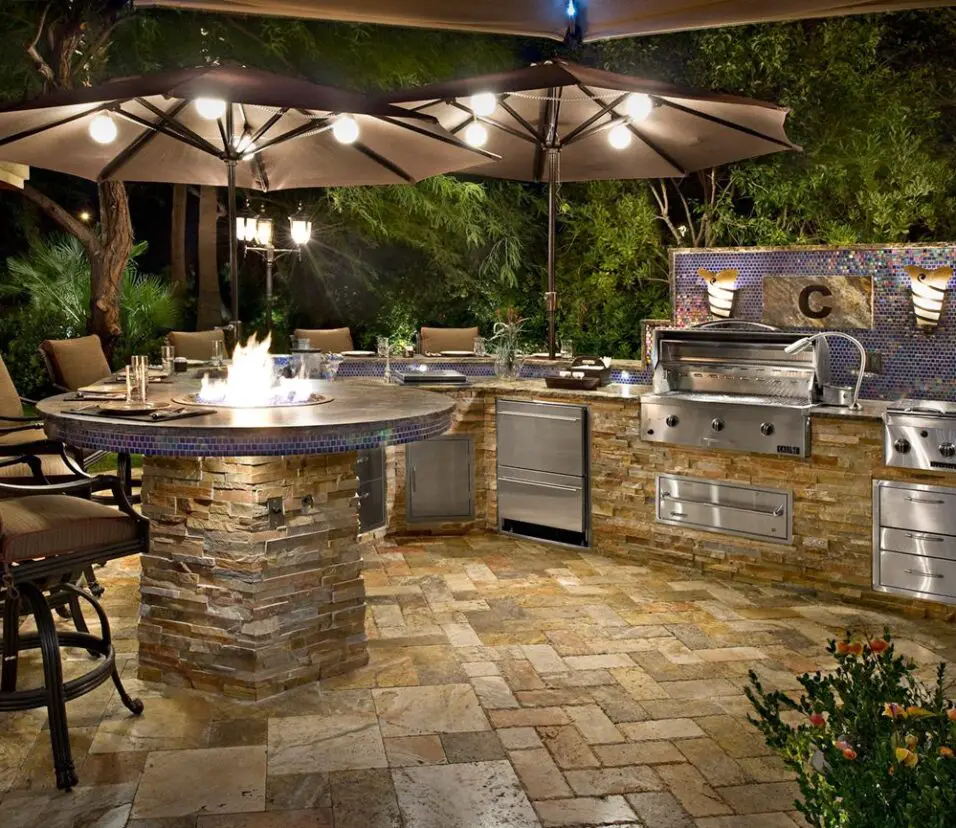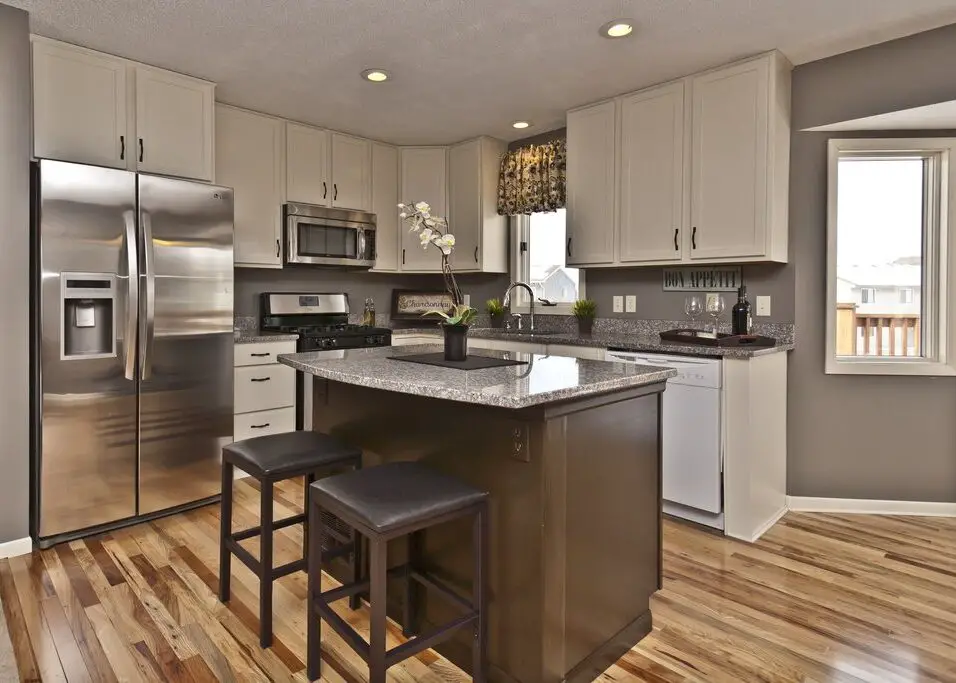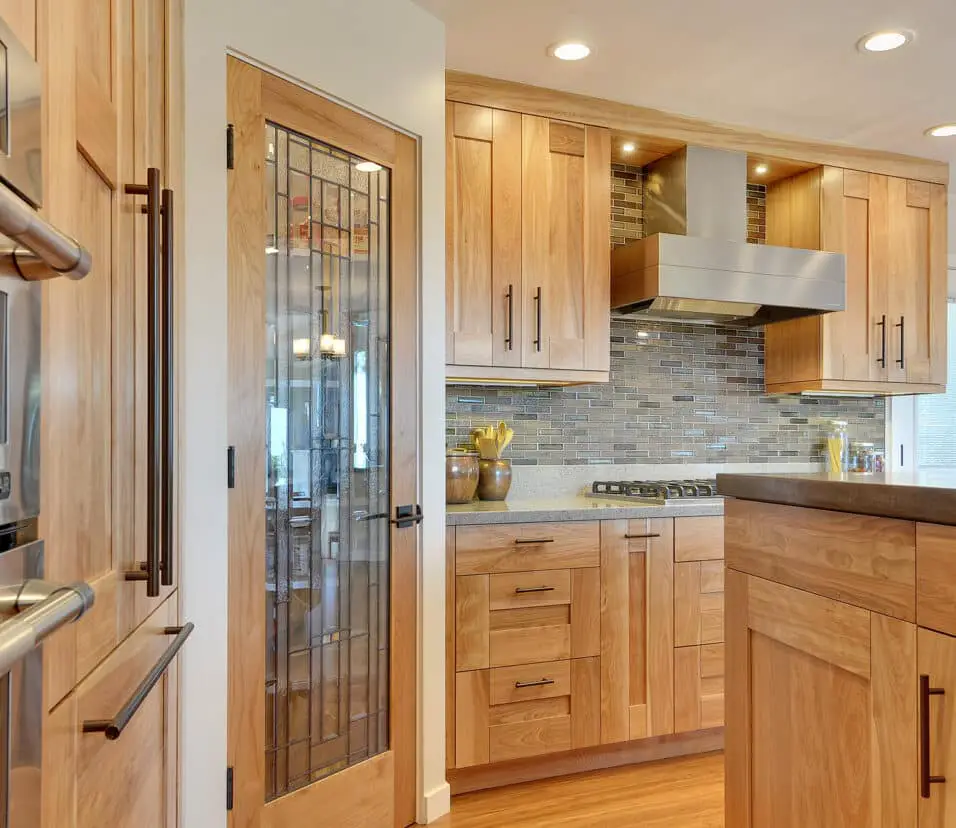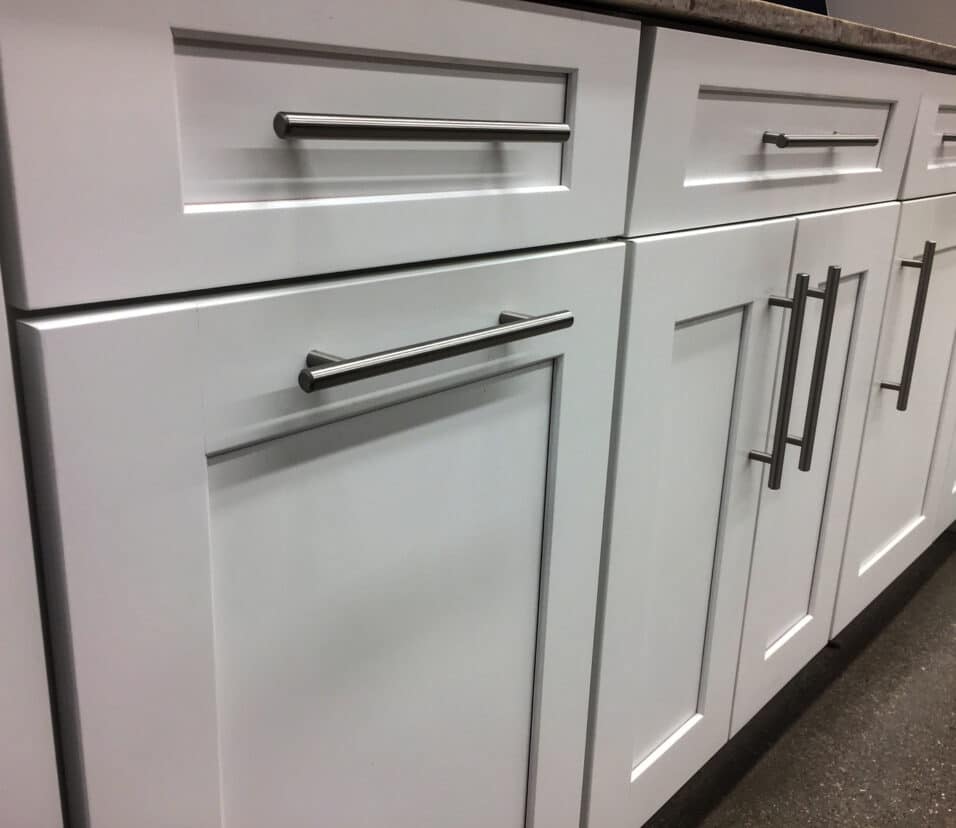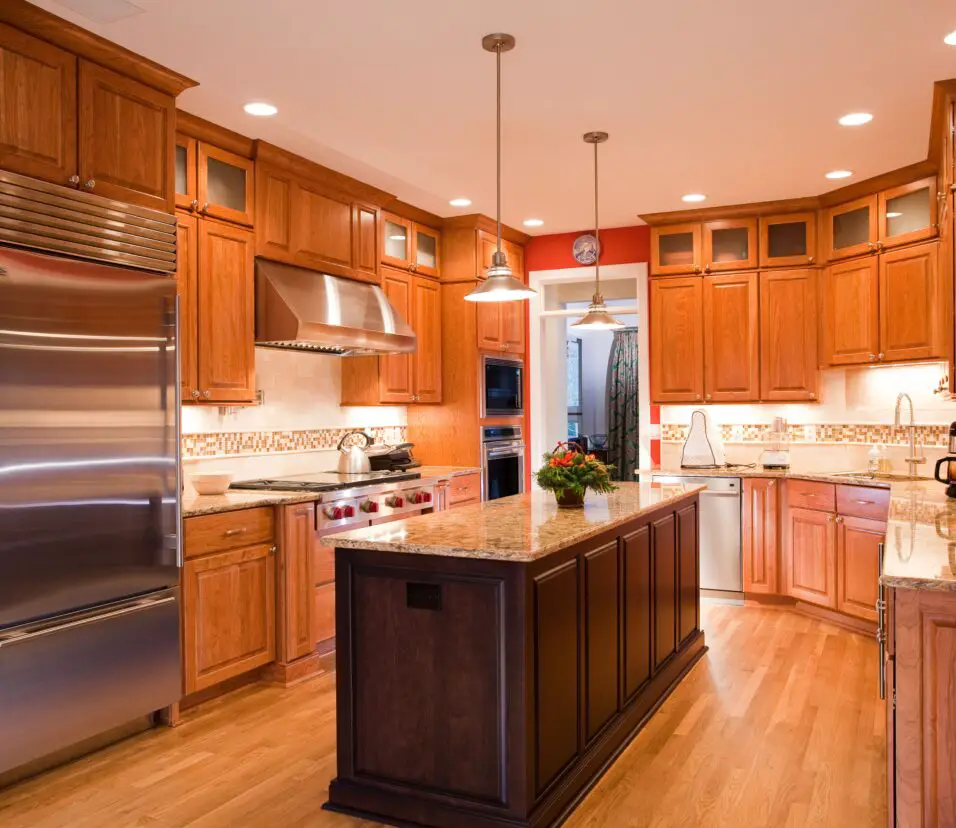What Material Is Used In Kitchen Cabinets
Introduction
What Material Is Used In Kitchen Cabinets: The art of design meets the science of functionality. In every modern kitchen, cabinets serve as the foundational element, providing both storage and style. While the external appearance and craftsmanship play a significant role in the overall aesthetic appeal, it is the materials used in their construction that truly determine their durability, functionality, and resilience. We shall journey through the diverse landscape of kitchen cabinet materials, uncovering the inherent strengths and unique attributes of each.
Over the years, advancements in technology and innovation have led to a wide array of materials being utilized in the creation of kitchen cabinets. From traditional solid woods to engineered alternatives, each material brings its unique set of characteristics to the table. Whether you seek a classic and timeless charm or a sleek and contemporary allure, the choice of material profoundly impacts the performance and longevity of your wooden kitchen cabinets.
The world of kitchen cabinet materials, unravelling the properties of various options available in the market. By understanding the distinctive features of each material, you’ll be better equipped to make an informed decision that aligns perfectly with your lifestyle, preferences, and design aspirations. From the luxurious allure of natural stone countertops to the sleek resilience of stainless steel, we shall leave no stone unturned in our pursuit of understanding the elements that shape the heart of the kitchen.

Which material is most durable for kitchen cabinets?
- Cabinets made of solid wood. Solid cabinets made of natural wood are the best when it comes to durability and strength.
Solid wood is still a classic and popular choice for kitchen cabinets because it is strong and looks good on its own. People know that oak, maple, cherry, and hickory are strong and durable types of wood. They can hold a lot of weight and won’t bend or crack.
Plywood is made of layers of wood pieces that are stuck together with glue. This way of building makes a material that is stable and strong, and it doesn’t bend or crack as easily as solid wood. Modern kitchen cabinets often are made of high-quality hardwood with thicker veneers because it lasts longer.
Some cheaper boards may have holes or other flaws that can be seen.
The price may change based on the type of board used. MDF is a type of manufactured wood that is made by putting a lot of pressure on wood fibers mixed with resin. It can be used for many things and is often used for cabinet doors and other parts inside of cabinets.
Thermofoil cabinets are made from MDF pieces that have a layer of heat-fused vinyl or PVC material on top of them. When you do this, you get a smooth, long-lasting surface that looks great in modern kitchens. Thermofoil doesn’t absorb water, so it’s a great choice for places that are damp.
Stainless steel cabinets are very long-lasting because they don’t rust, break, or get wet easily. They are popular in business kitchens because they are easy to clean and look modern. When used in a home, stainless steel cabinets can make the kitchen look sleek and modern.
What material is used for kitchen cabinet doors?
You can choose from MDF, plywood, particle board, and real wood. Kitchen cabinet doors made of solid wood are classic. With their natural grain patterns, real solid wood doors add warmth and charm to the kitchen.
You can paint or stain them different colors to match any style. Plywood is made by sticking together layers of wood slabs. It’s great for kitchen cabinet doors because it’s strong, stable, and won’t bend. Kitchens can be used on good plywood with stronger veneers. You can change the look of plywood by veneering or laminating it.
People like MDF kitchen cabinet doors because they are cheap. Glue is used to crush wood fibers into a smooth surface.
MDF doors can be painted, stained, or veneered to make them look the same. To make thermofoil doors, MDF pieces are covered in heat-fused vinyl or PVC. The surface is now smooth and long-lasting, and it’s easy to clean and take care of. The different colors and styles of thermofoil doors give you creative choices.
What are PVC kitchen cabinets?
PVC kitchen cabinets are completely made of polyvinyl chloride except for the hardware. You can choose between solid and hollow PVC boards. Solid polyvinyl chloride boards are usually more durable than hollow. But hollow boards tend to be lighter.
Water and Moisture Resistance: One of the significant advantages of PVC kitchen cabinets is their high resistance to water and moisture. This feature makes them an excellent choice for kitchens, where exposure to water, steam, and humidity is common.
Easy to Clean and Maintain: PVC cabinets have a non-porous surface, making them easy to clean with just a damp cloth and mild detergent. They do not require special cleaning agents or frequent polishing, making them a practical and time-saving choice for busy kitchens.
Durability and Strength: The combination of PVC sheets and a sturdy base frame makes PVC kitchen cabinets highly durable and resistant to impact. They can withstand the wear and tear of daily kitchen activities, making them a long-lasting investment.
Wide Range of Designs: Whether you prefer a high-gloss, matte, or textured finish, PVC cabinets can be customized to suit your aesthetic preferences.
Cost-Effective: PVC kitchen cabinets offer an affordable alternative to other materials like solid wood or high-end laminates. They provide a cost-effective solution for achieving a modern and stylish kitchen without compromising on quality.
Is plywood good for kitchen cabinets?
Plywood is generally more affordable than solid wood, making it a cost-effective choice for kitchen cabinets without compromising on quality. Its durability and resistance to wear ensure that you get a long-lasting investment for your kitchen.
Plywood can be easily cut, shaped, and customized to fit various cabinet designs and layouts. It can be used for cabinet boxes, shelves, and drawer bottoms, providing a consistent and cohesive look throughout the kitchen.
For environmentally conscious homeowners, plywood made from sustainably sourced or FSC (Forest Stewardship Council) certified wood is available. Choosing eco-friendly plywood ensures that your kitchen cabinets are not only durable but also aligned with responsible environmental practices.
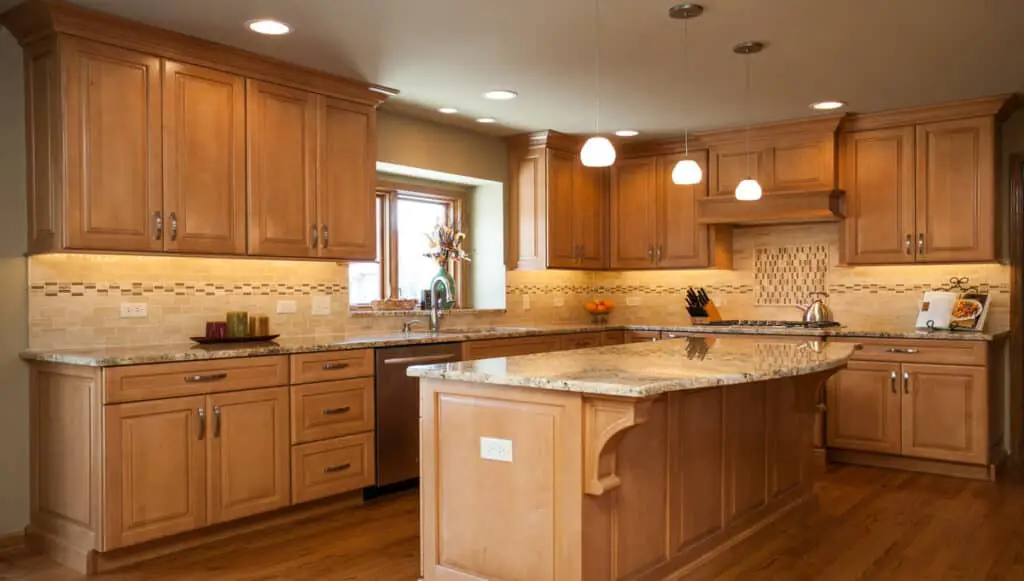
What is MDF material for kitchen cabinets?
If you want a simple, inexpensive cabinet that is easy to paint, MDF is a good choice for kitchen cabinets. MDF does need to be sealed, though, or it will swell. MDF kitchen doors are also more likely to get scratches and other damage.
Smooth and Even Surface: The surface of MDF is known to be smooth and even, which makes it a great choice for finishes like paint, plywood, or laminate. Its uniform makeup gets rid of the natural grain patterns that come with solid wood, making it a smooth surface for a wide range of design styles.
Flexibility in Design: MDF is easy to cut, shape, and carved, which lets you add small details and make the cabinets your own. It can be used for both the cabinet boxes and the doors, giving the whole kitchen a smooth, unified look.
Stable and Not Easily Warped: MDF is made by pressing and sticking together wood fibers, which makes the material stable and long-lasting. MDF doesn’t warp, expand, or shrink as much as solid wood does. This makes it a good choice for kitchen cabinets that need to last through daily use and changes in the environment.
Budget-Friendly Choice: MDF is usually less expensive than solid wood or other engineered wood products, which makes it a good choice for cheap homes. With it, people can get a high-quality kitchen that looks good without having to pay as much for real wood cabinets.
Which ply is good for kitchen cabinet?
BPW plywood is ideal for your kitchen.
Phenol-Formaldehyde or PF is used to treat this plywood which makes it capable of being exposed to water, even boiling water for up to 72 hours without being degraded in any way. BPW plywood thus offers protection against both water and heat.
Marine-grade plywood is one of the most durable and moisture-resistant options available, making it an excellent choice for kitchen cabinets. It is made using a special adhesive that provides exceptional water resistance, making it resistant to damage from humidity, spills, and water exposure commonly found in kitchens. Marine-grade plywood is often preferred for cabinet boxes, especially in areas near sinks and dishwashers.
Birch plywood is known for its attractive appearance and smooth surface, making it an excellent choice for cabinet doors and visible elements. It offers good strength and stability, making it suitable for both frameless and framed cabinet designs.
MDF core plywood combines the advantages of medium-density fiberboard (MDF) and plywood. This type of plywood is commonly used for cabinet doors and is ideal for paint and veneer finishes.
Particleboard core plywood, also known as PBC plywood, is constructed with a core made from wood particles and chips, sandwiched between exterior layers of plywood. This type of plywood is a cost-effective option for cabinet construction and is commonly used for cabinet boxes and less visible components.
Which waterproof plywood is best for kitchen?
BWP Plywood is considered to be more durable and stronger than the rest of the plywood. This is because most of the BWP Plywood has passed the 72 hour Boiling Water Test. This explains why BWP Plywood is a perfect fit for your kitchen furniture.
Assess the level of moisture and humidity in your kitchen. While marine-grade plywood offers the highest level of waterproofing, it may be more expensive than BWR grade plywood. Consider your budget and balance it with your waterproofing needs.
For both marine-grade and BWR grade plywood, ensure you choose plywood from reputable manufacturers known for their high-quality products. Inspect the plywood for any defects or inconsistencies before purchasing. Reserve marine-grade plywood for areas that are directly exposed to water, such as under the sink or near the dishwasher. BWR grade plywood can be used for the rest of the kitchen cabinet components.
What thickness of plywood for kitchen cabinets?
This is the most commonly used thickness for kitchen cabinets and is considered the standard choice. 3/4-inch plywood provides excellent stability, strength, and durability, making it suitable for supporting the weight of cabinet boxes and countertops. It is robust enough to withstand the daily demands of kitchen use and can accommodate various kitchen cabinet designs, including framed and frameless styles.
5/8-inch plywood is a less common thickness option, but it can be used for kitchen cabinets that require a balance between the sturdiness of 3/4-inch plywood and the weight reduction of 1/2-inch plywood. It offers good structural support and can be a viable choice for larger kitchen cabinets or those with heavy appliances.

Conclusion
Traditional solid woods exude a timeless charm and authenticity, adding warmth and character to any kitchen space. Engineered wood products offer exceptional durability and sustainability, catering to the demands of modern living.
Stainless steel and natural stone countertops introduce an element of luxury and resilience, perfectly complementing contemporary aesthetics. Additionally, alternative eco-friendly materials like bamboo and recycled wood contribute to sustainability efforts, appealing to environmentally-conscious homeowners.
A balance between style, functionality, and durability is crucial in creating kitchen cabinets material that stand the test of time, enhancing both the beauty and efficiency of the heart of the home. As kitchen design continues to evolve, so too do the options for cabinet materials. It is essential for homeowners and designers alike to stay informed about the latest innovations and advancements in materials to make well-informed decisions that best suit their unique visions and requirements.




